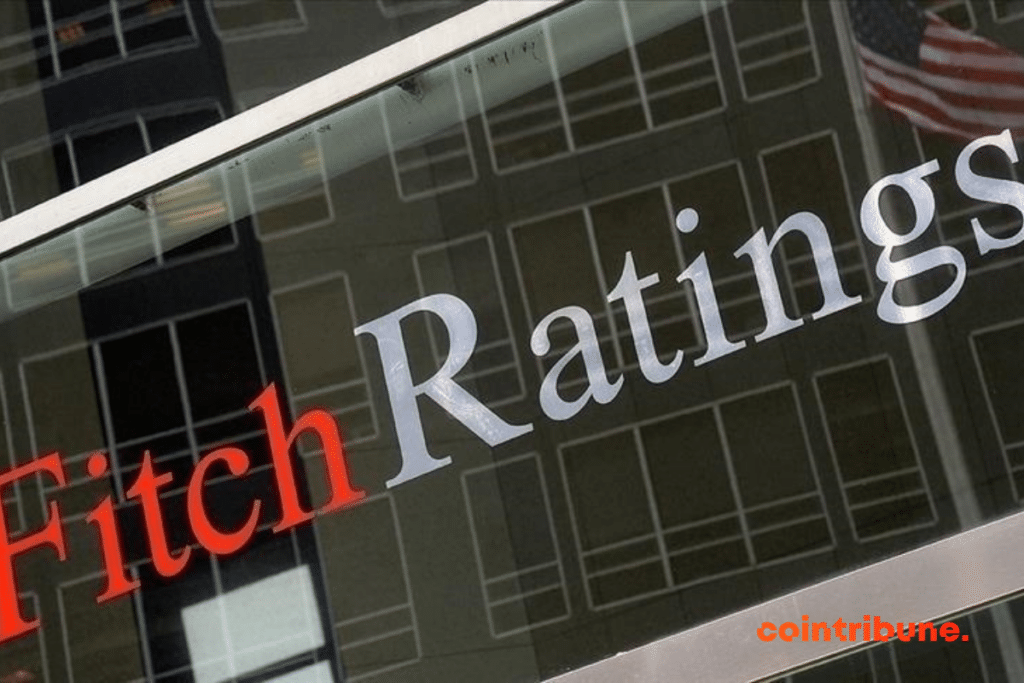🇺🇸Debt Costs: US Federal Government Interest Payments Surge
— Mo Hossain (@MoHossain) August 1, 2023
Spending on interest payments nears an annualized $1 trillion
-bbg pic.twitter.com/QcTde0cPan
A
A
Fitch strips AAA rating from U.S.
Thu 03 Aug 2023 ▪
4
min read ▪ by
Getting informed
▪
Trading
After Standard & Poor’s in 2011, it’s now Fitch’s turn to downgrade the US sovereign debt rating.

From AAA to AA+
The New York-based rating agency justified its decision by pointing to “the expected fiscal deterioration over the next three years, a high and growing general government debt burden, and the erosion of governance”.
On the issue of governance, Fitch observes a steady deterioration over the past 20 years, including in the areas of taxation and debt:
“The repeated debt-limit political standoffs and last-minute resolutions have eroded confidence in fiscal management.”
And this despite the bipartisan agreement in June to suspend the debt ceiling until January 2025.
Nor did Fitch shy away from the unspoken issue par excellence. Namely, the unfunded expenses associated with rising Social Security and Medicare costs due to an aging population.
As we mentioned in a previous article:
“In July 2023, the official debt figure for the US federal government stood at $32,600 billion.
That’s $97,261 for every American. Or $248,403 per family.
Then there’s the private household debt of $19,000 billion. That gives us $154,000 of debt per American of any age.
And then there’s the corporate debt and the $100,000 billion or so that the U.S. government will have to borrow to meet its commitments to pensions, health insurance, etc.”
Simply put, the total debt of the American nation represents 1/3 of the world’s debt…
Exponential rise in debt
Fitch forecasts that the deficit will reach 6.3% of GDP in 2023, compared with 3.7% in 2022. This is largely due to higher interest charges. Interest costs have almost doubled since the FED raised the cost of money:
The ratio of interest on debt to government revenue is expected to reach 10% by 2025. In other words, 10% of revenues go directly into debt servicing. This is much higher than the median for AA-rated countries (3%) and the AAA median (1%).
For the rating agency, the public debt/GDP ratio will reach over 118% in 2025. Bear in mind that we’re talking here only about federal debt. Each of the 50 American states also has its own debt…
“This ratio is more than two and a half times higher than the ‘AAA’ median (39% of GDP) and the ‘AA’ median (45% of GDP),” emphasizes Fitch.
Clearly, the United States enjoys preferential treatment. The reason being its monetary hegemony:
“The US dollar is the world’s main reserve currency, which gives the government extraordinary financing flexibility.”
Unfortunately for Uncle Sam, this exorbitant privilege is eroding by the day. And unless we emerge victorious from a third world war, it’s hard to see how the trend can be reversed.
Even Lary Fink, CEO of America’s largest investment fund (BlackRock), now considers bitcoin to be an “international asset” providing protection against inflation and the devaluation of all currencies.
Which is the definition of a good international reserve currency. Unlike the dollar, which is backed by debt on a dangerously exponential trajectory.
Maximize your Cointribune experience with our "Read to Earn" program! For every article you read, earn points and access exclusive rewards. Sign up now and start earning benefits.
A
A
Bitcoin, geopolitical, economic and energy journalist.
DISCLAIMER
The views, thoughts, and opinions expressed in this article belong solely to the author, and should not be taken as investment advice. Do your own research before taking any investment decisions.